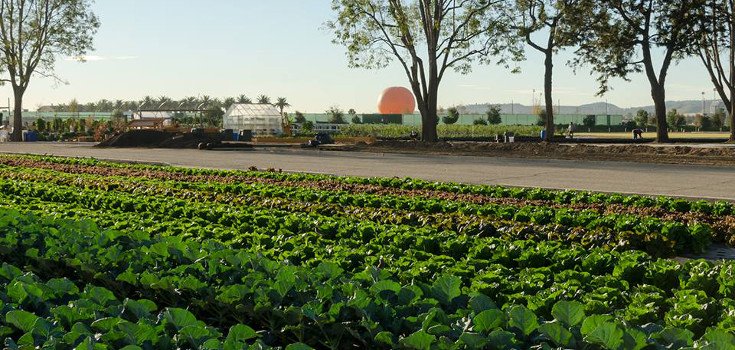Watch How this Incredible Public Food Park Feeds 200,000 a Month

It is becoming more apparent that we need to begin reclaiming our food supply through small-scale, wide-spread farming practices. We can no longer rely on Big Food to supply us with the nutritious food we need, and we certainly can’t rely on mega chemical companies like Monsanto to feed us with their genetically modified creations. This is why countless communities are embracing the giving art of local farms and supporting local food businesses. One Incredible Edible park in Irvine, California, formerly 7.5 acres of wasted space, is now an edible park that feeds 200,000 people every month!
It’s time that we each learn how to hoe a row, plant seeds at the most optimum time, and how to fix a broken-down tractor. As our elders pass this information to younger generations, we are ensuring that our food sovereignty continues. Indeed, small-scale, diversified farming is seeing a resurgence it hasn’t experienced for a long time, with often surprising participants.
Read: How Organic ‘Micro-Farms’ are Changing our Food Supply
Just imagine raising a vegetable garden right in front of your local police station, and not a single officer inquires about what you are doing. Or, plucking a few cherries from outside your doctors’ office before you go in for an annual check-up. How about harvesting some apples and pears from along a canal path?
There are over 70 community gardens scattered around Todmorden, West Yorkshire in the United Kingdom, and the residents there are encouraged to take fresh fruit and vegetables as they are inclined.
Check out the video below to see how a public food park can feed so many people.

The idea is creative and compelling. It works well where people respect each other, contribute time and energy, and don’t hoard produce. It works where cattle and goats are not allowed to trample and gorge themselves in the garden at night. It works when government officials and other leaders don’t tax or sell the produce. The example offered is good in places like California where those factors are respected. Unfortunately private land and private growing is the only way that this program can work in developing nations where I have lived for 36 years of my life.